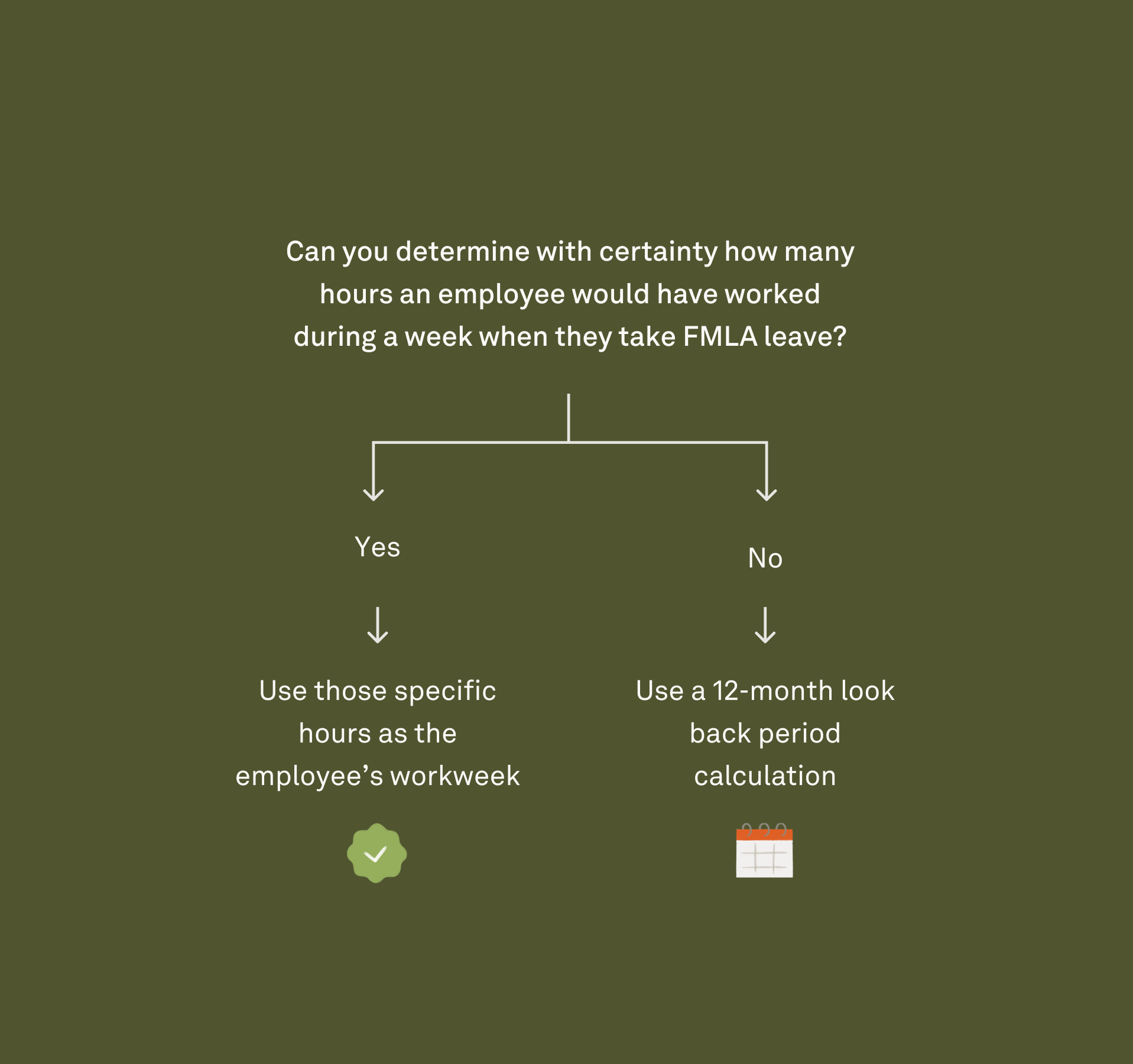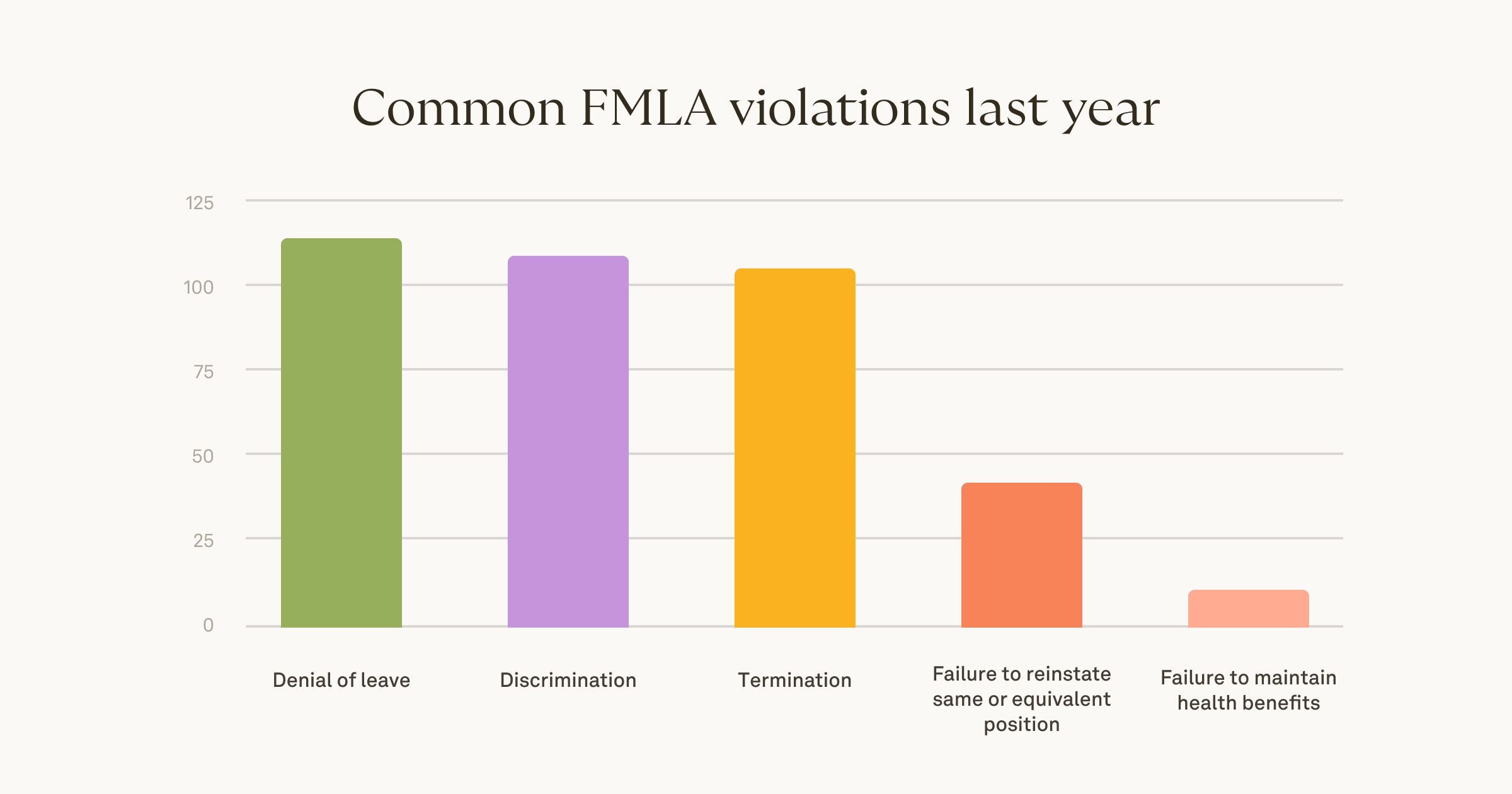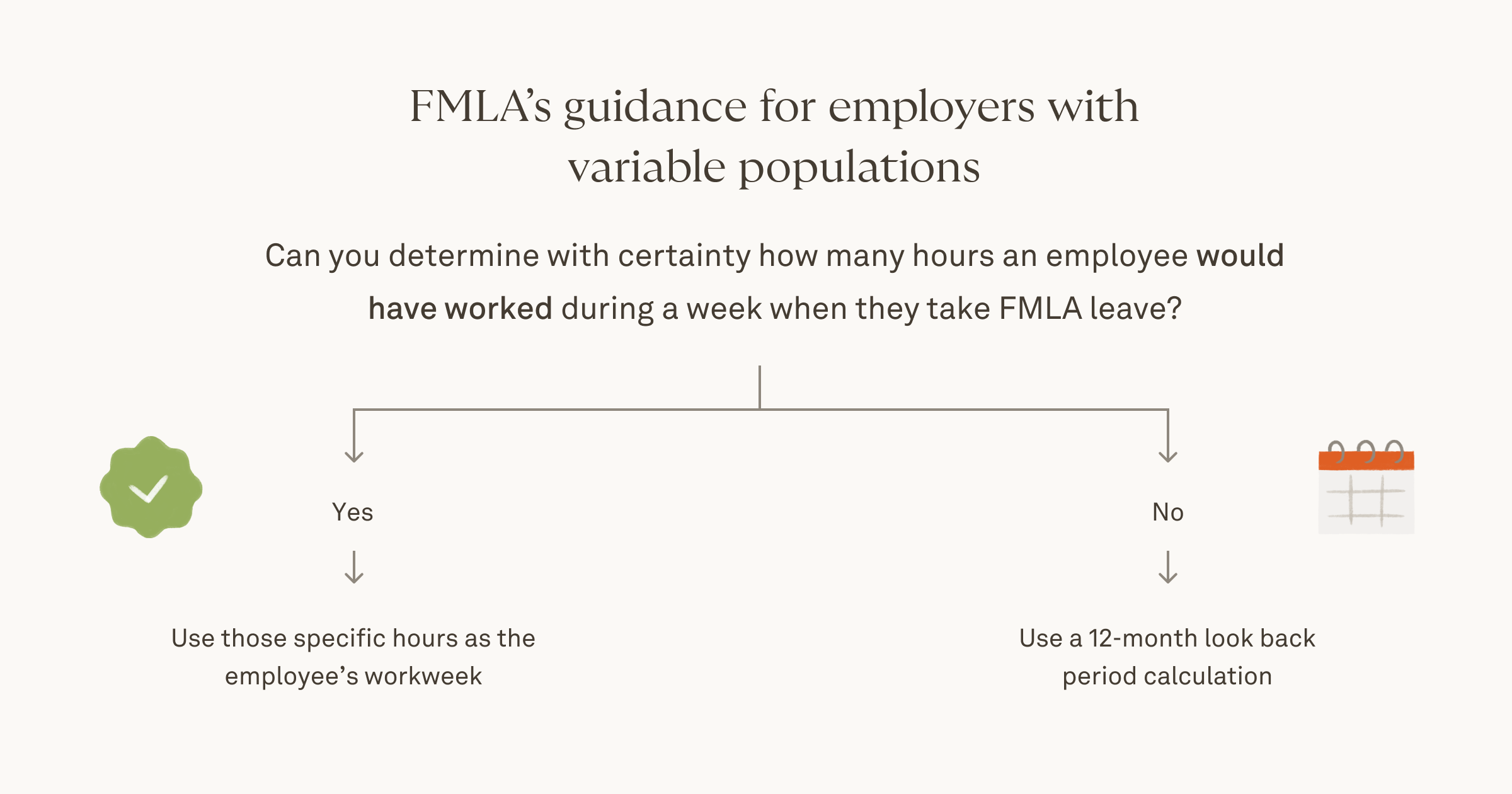The hidden complexity of leave for employees with variable schedules (and how to get it right)
Why variable schedules break traditional leave management and how to get compliance right.


Why variable schedules break traditional leave management and how to get compliance right.


Imagine this: You terminate an employee who you believe has exhausted their FMLA balance, only to face a lawsuit six months later because you miscalculated their workweeks. The employee had a variable schedule—sometimes they worked 25 hours a week, sometimes 40—and you (or your leave vendor) treated every week the same. Now you’re facing legal liability and trying to reconstruct months of leave calculations.
This isn’t a hypothetical situation. FMLA violations due to wrongful terminations have increased by 53% since 2023, and last year more than one in four FMLA violation cases investigated by the Department of Labor was about a wrongful termination. For HR teams managing employee populations with variable schedules in systems that weren’t built to handle complexity of FMLA workweek calculations, these numbers represent a growing risk that shouldn’t be ignored. Teams know that managing leave can be complicated, but variable schedules introduce a level of nuance that most traditional solutions aren’t equipped to handle.

The fundamental challenge is that FMLA’s 12 workweeks are not the same as 12 calendar weeks. Under FMLA, eligible employees are entitled to a total 12 workweeks during any 12-month period, but the total number of hours that make up those workweeks are dependent on the specific hours the employee would have worked if they weren’t on leave (29 CFR 825.205(b)(1)).
TL;DR: When an employee’s weekly hours change, so do their FMLA usage calculations, and you can’t treat each week the same.
The FMLA’s guidance for variable schedules comes down to a single question: Can you determine with certainty how many hours an employee would have worked during a week when they take FMLA leave?
If the answer is yes, meaning the employer communicates a work schedule to employees and can identify the actual workweek, then the FMLA requires you to use those specific hours as the employee’s workweek. During each week that a variable employee takes intermittent leave, employers need to take the total number of hours they would have worked that week and then calculate the fraction of the FMLA workweek used.
Let’s look at an example:

In most cases, even when an employee’s schedule is subject to seasonal variations, the Department of Labor has made it clear that these employees have established schedules and verifiable work histories that can be used to determine their expected work days and hours (DOL Fact Sheet #28I).
When an employee’s work schedule varies so much that you genuinely cannot determine with certainty how many hours they would have worked in a typical week, you can use a 12-month lookback calculation. In these cases, the FMLA allows employers to calculate the workweek by identifying a weekly average of hours scheduled over the 12 months before the leave start date (29 CFR 825.205(b)(3)).
This exception exists for true edge cases, not as a convenient workaround for complex scheduling. Given the compliance risks associated with this calculation method, it should be your last resort, not your default approach.
Determining whether or not you can establish certainty requires careful assessment of how you communicate work schedules to your employees. This isn’t a technical decision, it’s a compliance judgement that should (ideally) be informed by legal counsel. Really long story short: employers can categorize employees with variable schedules into two groups:

Variable schedule leave calculations aren't just an administrative challenge—they're a legal requirement that directly impacts your employees' rights and your organization's compliance posture. Getting this right requires more than good intentions; it requires systems built by teams who understand both the letter of the law and the operational realities of modern workplaces. Use our vendor evaluation worksheet to see if your current solution is equipped to handle this complexity:
The complexity of variable schedule leave management isn't going away—if anything, it's becoming more common as workforces become increasingly flexible. But with the right system, it doesn't have to be so complicated.
We believe leave shouldn’t be harder just because an employees’ schedule looks different than the “typical” 9-5. That’s why we’ve built support for employees with variable schedules that gives them the leave experience they deserve, and streamlines leave management for HR teams. We built our variable schedule support with this level of care and legal rigor because we understand what's at stake. Technology should actually understand leave law, not just claim to automate it.
As a reminder, Cocoon is not a law firm and this content is not intended to provide legal advice. While our Principal Compliance Architect Frank Alvarez is an attorney, he is not your company's attorney. Always consult with your legal counsel for guidance specific to your organization's circumstances.